What Is an Undisclosed Recipient? Definition, Benefits, and How to Use Them
Want to send emails to multiple people without revealing their identities? Learn what “Undisclosed Recipient” means, how to use it effectively, and why it’s a valuable tool for secure communication.
What is an Undisclosed Recipient?
An “Undisclosed Recipient” is a way to send an email to multiple people while keeping their email addresses hidden from each other.
This is done by placing all recipients in the BCC (Blind Carbon Copy) field, and adding “Undisclosed Recipient” as a placeholder in the To field.
When you send an email like this, each recipient only sees “Undisclosed Recipient” in the To field, without knowing who else received the email.
This is particularly useful for maintaining privacy in group communications, such as newsletters, event invitations, or announcements.
Why send emails to Undisclosed Recipients?
Sending messages to Undisclosed Recipients lets you streamline group communication while protecting your recipients’ information. Here’s why you might choose this approach:
- Protect recipient privacy: Keep recipients’ email addresses hidden from others, ensuring confidentiality and compliance with privacy regulations.
- Prevent reply-all chaos: Avoid situations where recipients accidentally reply to all, leading to cluttered inboxes or unintended conversations.
- Simplify group communication: Send the same email to multiple recipients without revealing the full list, ideal for announcements.
How to send an email to Undisclosed Recipients?
Sending an email to Undisclosed Recipients involves using the BCC (Blind Carbon Copy) field to hide recipients’ addresses from one another. Here’s how to send emails to undisclosed recipients in Gmail, Outlook, or Yahoo Mail:
-
Open your email client.
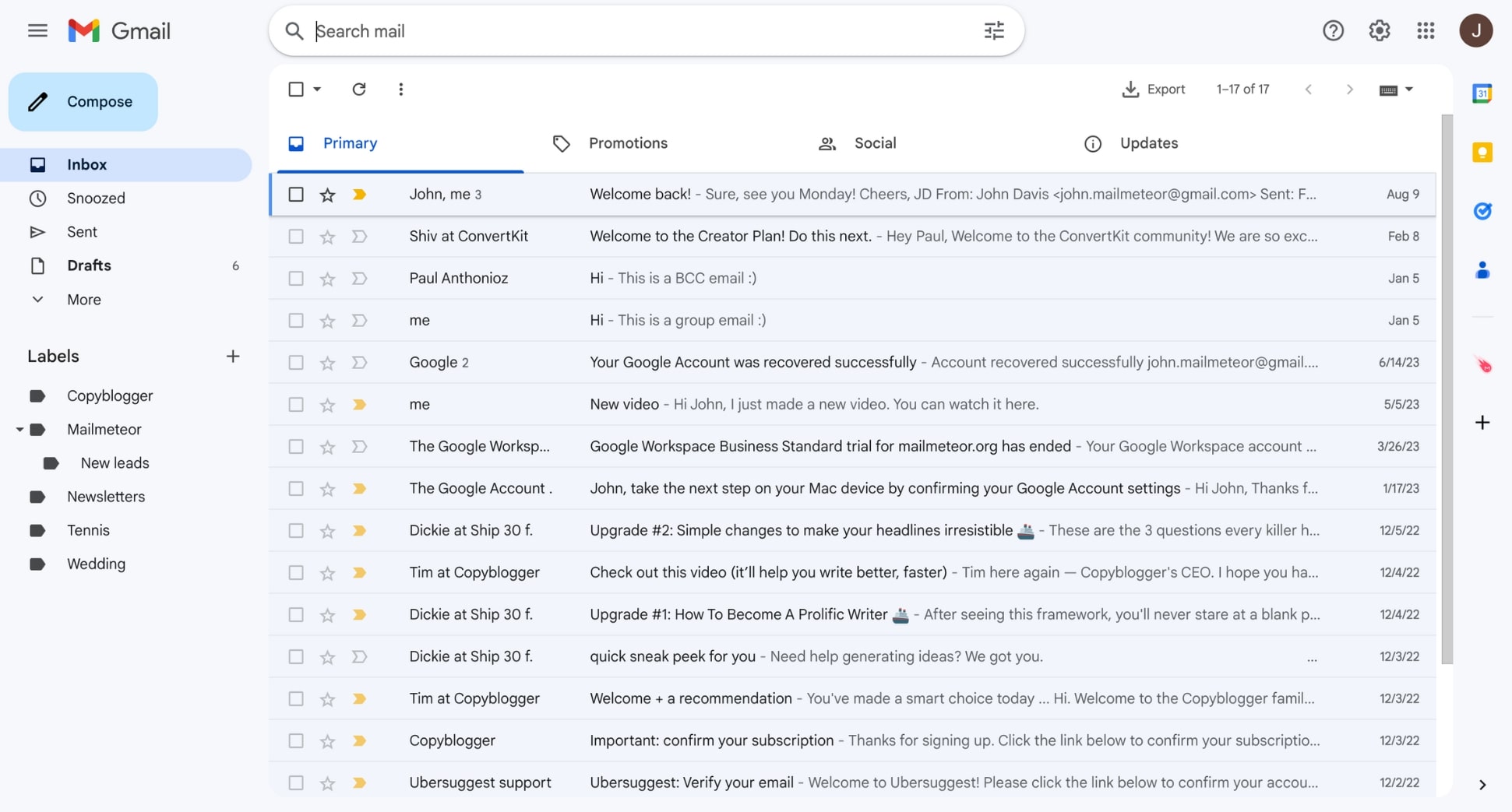
-
Click Compose to create a new message.
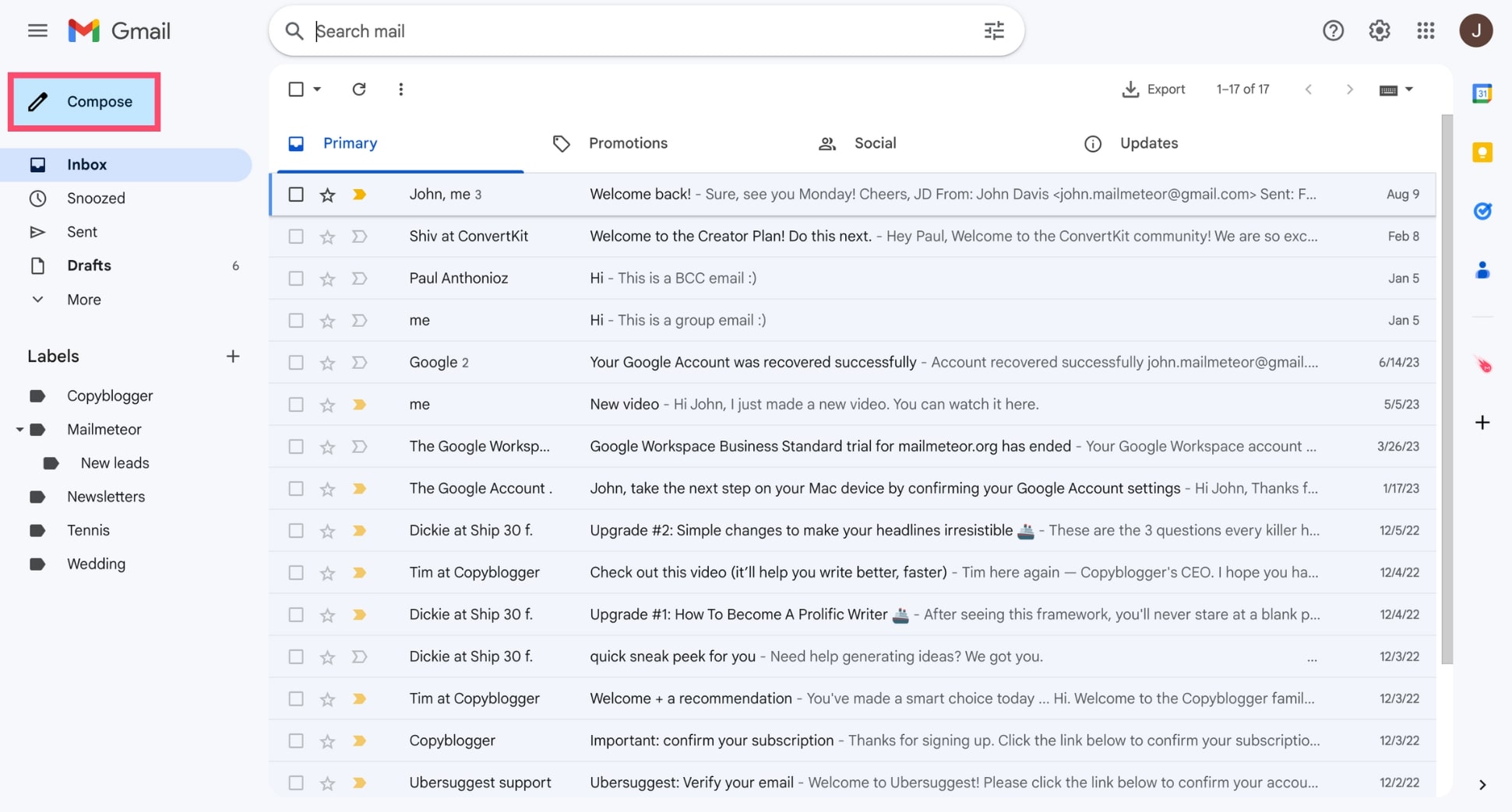
-
In the To field, type “Undisclosed Recipients”. Then add your own email address in <> (e.g., Undisclosed Recipients [email protected]). This acts as a placeholder and makes your email appear more professional.
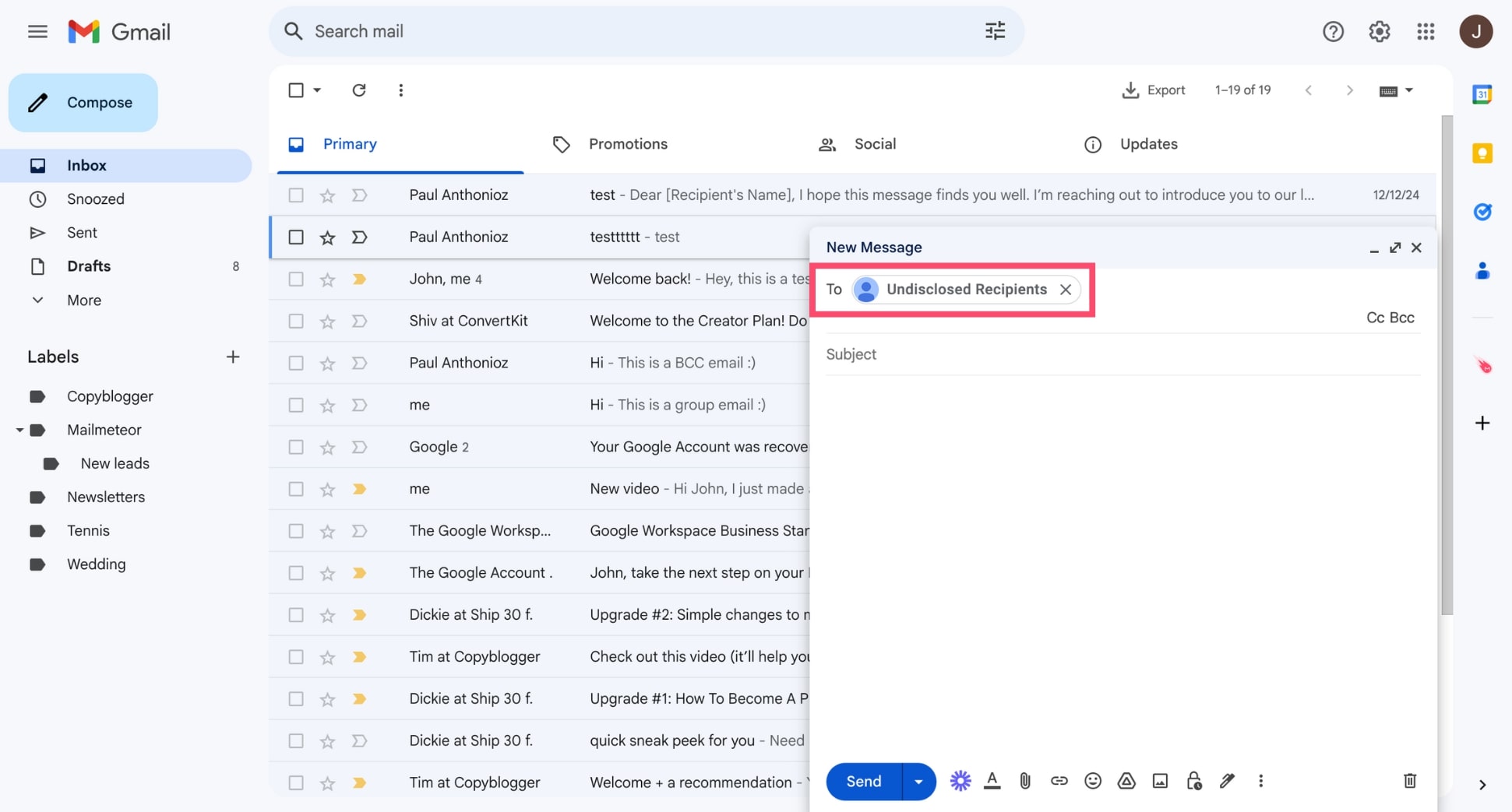
-
Locate the BCC field (often visible near the To and CC fields). Then add the email addresses of all recipients, separated by commas.
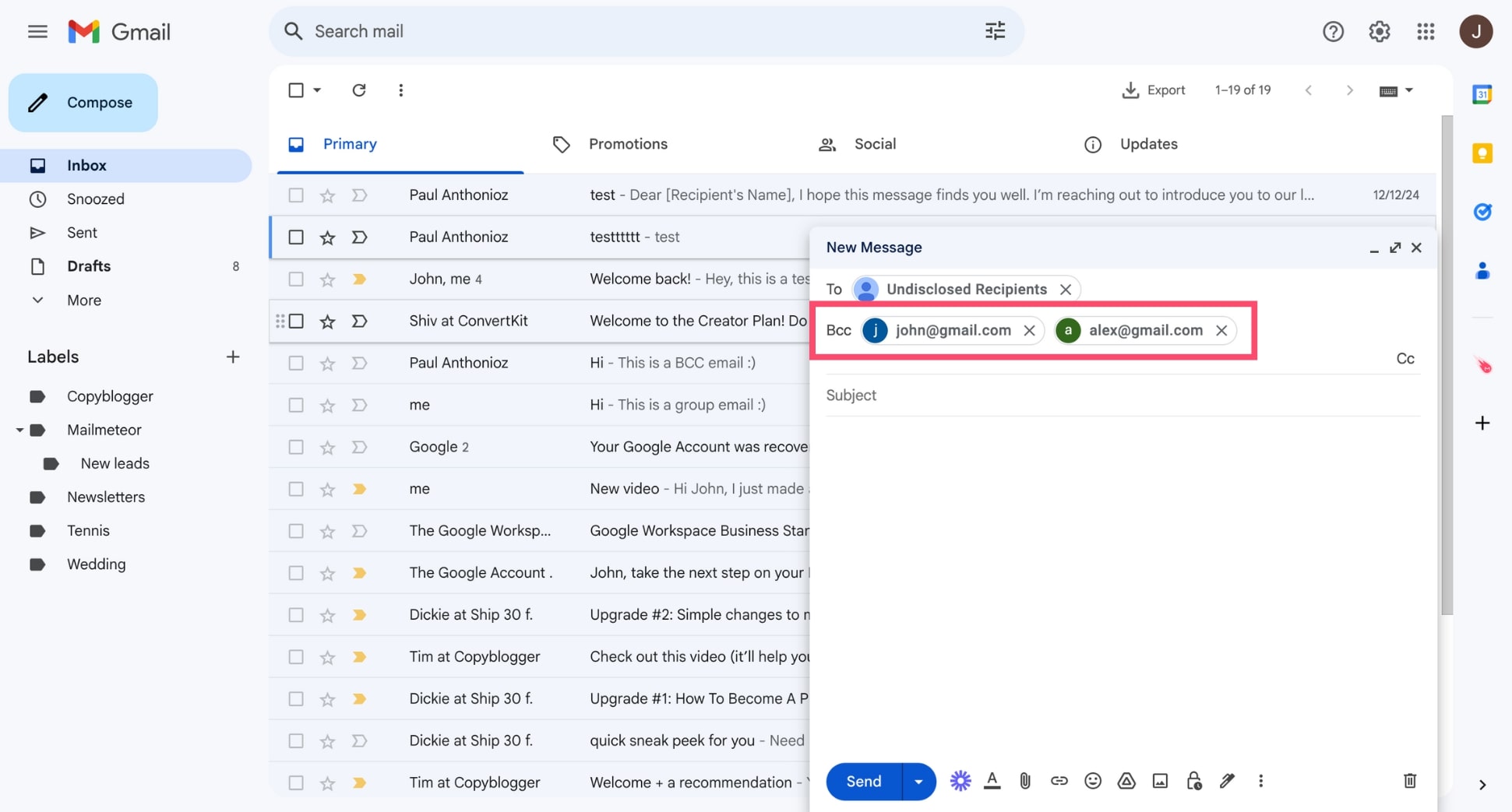
-
Write your subject line and craft your email body as you normally would.
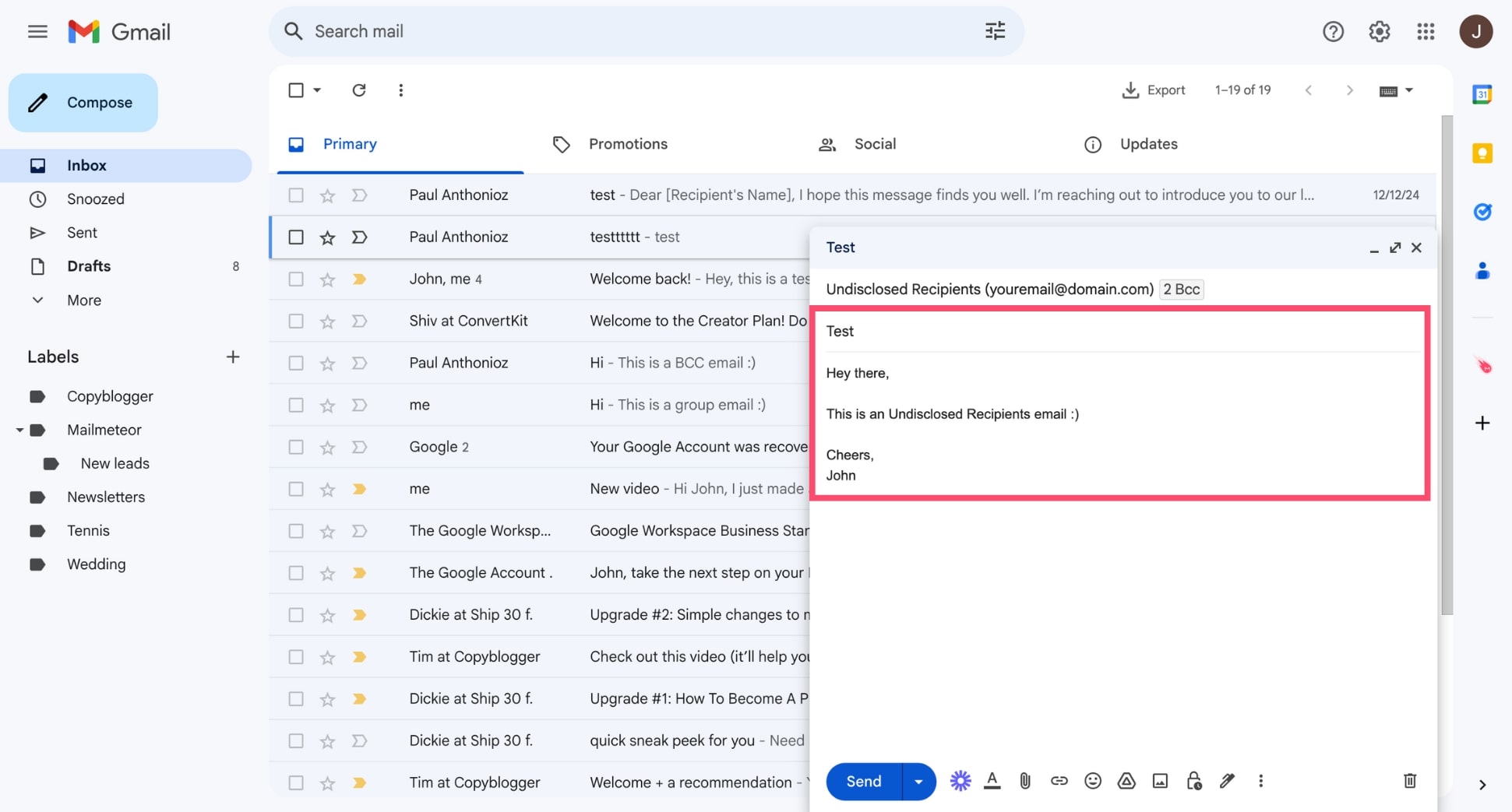
-
Proofread your message. Then, once you’re ready, click Send.
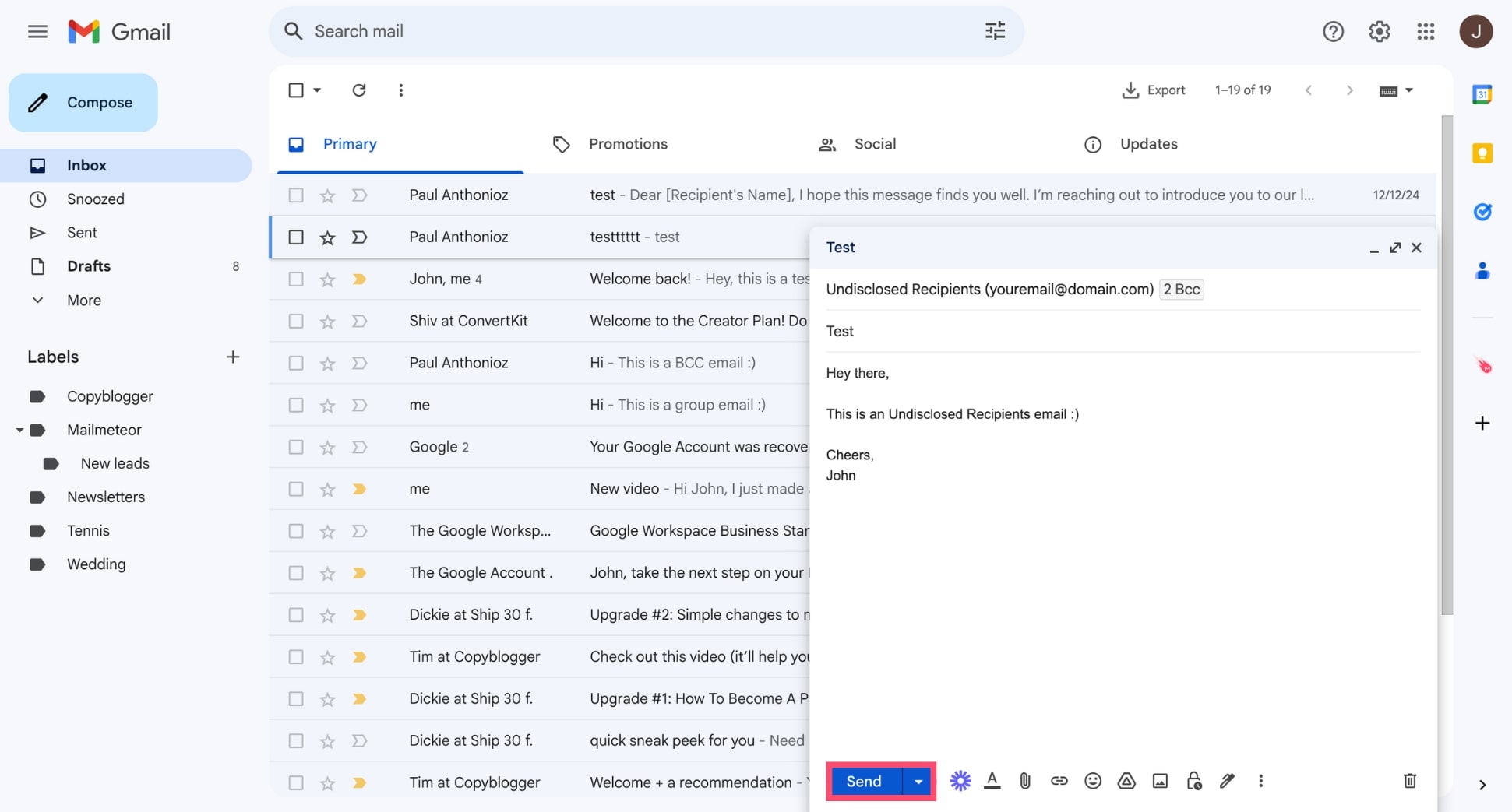
All set. Your recipients will now receive the email with “Undisclosed Recipients” displayed in the To field. This allows you to reach multiple contacts simultaneously while keeping their email addresses private and secure.
FAQs – Undisclosed Recipient
What is the difference between BCC and Undisclosed Recipient?
BCC (Blind Carbon Copy) is a feature that allows you to send an email to multiple recipients without them seeing each other’s addresses. “Undisclosed Recipient” is a term used when the sender addresses the email to a placeholder name while listing all actual recipients in the BCC field.
Is it legal to use Undisclosed Recipients?
Yes, it is legal to use Undisclosed Recipients, provided the emails comply with privacy laws like GDPR or CAN-SPAM. This includes obtaining consent before sending emails, providing a clear way to opt-out, and avoiding spam.
How do I create an “Undisclosed Recipient” email?
Here’s how to send an “Undisclosed Recipient” email:
- Open your email client and compose a new email.
- In the “To” field, type “Undisclosed recipients”. Then add a space, and enter your own email address in <>.
- Add all actual recipients in the BCC field to keep their addresses hidden.
- Compose your email as usual and hit send.
And voilà. All recipients should now receive the email without seeing each other’s details. Easy, right?
Are Undisclosed Recipients notified of each other?
No, recipients listed under BCC as Undisclosed Recipients can’t see each other’s email addresses. This feature ensures privacy and prevents accidental sharing of personal or professional contact details.
Can I personalize emails sent to Undisclosed Recipients?
Yes, emails sent to Undisclosed Recipients using the BCC field can be personalized with Mailmeteor. This simple email marketing tool allows you to send a mail merge with BCC recipients while including personalized fields such as names, company details, or custom messages for each recipient. This way, you maintain privacy while delivering tailored emails to multiple recipients.
What are the limitations of using Undisclosed Recipients?
While useful for privacy, there are some limitations to using Undisclosed Recipients. Here are the main drawbacks of this feature:
- Emails with many BCC recipients may trigger spam filters.
- Using Undisclosed Recipients for business communication might appear impersonal or less professional.
- If recipients reply to the email, their response will only go to the sender and not to other recipients.
How many Undisclosed Recipients can you email at once?
The number of Undisclosed Recipients you can email simultaneously depends on the limits set by your email service provider. Here are some examples:
- Gmail: Allows up to 500 recipients per day for personal accounts and 2,000 for Google Workspace accounts.
- Outlook: Typically supports up to 500 recipients per message, but the daily limit varies by account type.
- Yahoo Mail: Has a limit of 100 recipients per email and 500 per day.
If you need to email a larger audience, consider using email marketing tools like Mailmeteor, which enable you to send personalized emails at scale while maintaining privacy.
Read more